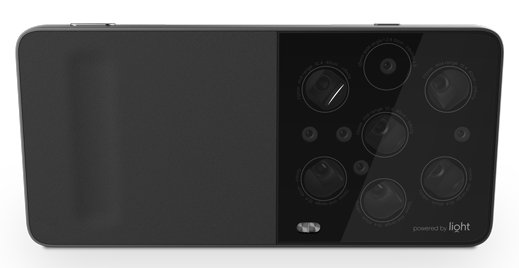Another probable dual camera setup:
Asus ZenFone teaser shows off dual camera setup | Android Central
Also, reading more on the Corephotonics technology as well as the Pelican Array Tech.
4957x3718
18.4MP
1.1µm
5.45mm x 4.09mm (22.29mm^2) [ Apple's sensor 17.94mm^2 sensor 8MP]
You could use 4 of these sensors in an array, allowing for a phone thickness of probably ~7-8mm. The total sensor area would be 89mm^2!!!
One sensor would have a 3x optical zoom lens
One would have a standard wide angle lens
One would have no color filter (much more light sensitive - a black and white image)
One would have Infrared capabilities (no IR filter)
If the 4 modules are next to each other and physically attached you can create a macro-module that would still be able to have OIS.
A setup like this should take very sharp pictures, allow for some zooming, have very good (great) low light performance. 3D effects, blurring, night vision, etc would all be there as well.
The downside I imagine would be processing overhead and memory bandwidth. You need to process up to 74MP with each shot, align the pixels, and create a final image, probably closer to a 16MP image, since there would be cropping at the edges and saving the overlapping image from the 4 sensors. And of course the cost, that is 4 cameras. I would pay more for it...
Alternatively, if your are not worried about 4k video (and we probably shouldn't be for at least another 2-3 years), then stick with 8-12MP range for each sensor
4320 x 2432
10MP
1.5 µm
6.48mm x 3.65mm (23.65mm^2)
This would greatly reduce the computational overhead, increase the light sensitivity of each pixel, and reduce the file size.


